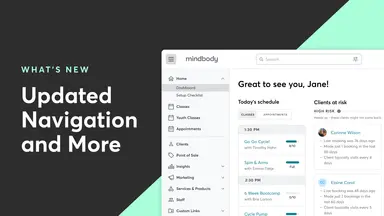
4 Steps to Get a Fresh Start with Your Data
May 23, 2022
Whether you’re gearing up for summer or hunkering down for winter, new seasons are a great time to get organized.
For those in the northern hemisphere, spring is the perfect time to purge because—let’s be honest—chasing dust bunnies is the last thing you want to be doing when summer rolls around.
Or maybe you’re down south, noticing the first signs of autumn in the air. Once winter arrives, you’re going to be spending a lot more time indoors—making now a good time to prepare.
No matter where you are (or how eager you are to tidy up), there’s one item you should add to your cleaning to-do list: your data. These four tips will help you effectively organize your data so you can have that "fresh start" feeling.
1. Clean your data
While “cleaning up your business data” can sound like an overwhelming task, the benefits are difficult to deny. The truth is, you won’t get accurate results with inaccurate data. Clean, well-organized data is critical for your team’s success.
Data analyst Daniel Newman explains: “Clean data is essential to your team's confidence in the data process. Once your team loses faith in your data, it will be hard to get them back on track. Whether it's messy, inaccurate, or poorly designed, your dirty data is an Achilles Heel you can't afford to keep.”
Messy data is susceptible to errors, making it untrustworthy—and untrustworthy data is unlikely to get team buy-in when it comes to making data-driven decisions. Clean data is key to achieving your goals.
2. Set priorities
Your data can come from a variety of sources: management software, financial tools, spreadsheets, and social media, to name a few. But not all data is relevant to your business.
What you'll likely find is that some data is critical to your organizational goals; some is relevant, but not critical, and some is just clutter. Filtering out the noise of "data clutter" will help you eliminate distractions and keep your focus on what matters most in your business.
3. Look at the whole picture
No business system operates independently. For example, marketing impacts sales, sales impacts customer service, and customer service impacts retention.
However, it can be difficult to visualize these interactions. To see how well your latest email promotion performed, for example, you might have to track data between your email marketing platform and multiple social media accounts.
So, how do you connect data between your business apps, spreadsheets, and other databases?
Good news: you don’t have to do it by hand. Business intelligence solutions, like Grow, make it easy to connect all your data sources and view your business’s performance in focused dashboards.
Business intelligence gives you a complete view of your business: where you’ve been, where you are, and where you need to go.
4. Make your data available
Having access to data allows your entire team to make informed decisions and gain a better understanding of how their work impacts the entire business.
Data also has the power to engage your team members—and keep them aligned. When your team sees progress towards shared goals, they naturally align their efforts to help accomplish them. Seeing progress also generates a sense of fulfillment, keeping your team engaged and inspired.
The bottom line: Business intelligence tools make it easy to share data among teams. When your team has access to performance measurement data, they're empowered to work towards goals and make data-driven decisions in their day-to-day work, rather than blindly guessing. It’s a win-win for your business and your staff.
Although this blog offers business advice, this content is for general informational purposes only—it is not intended to replace the guidance of a licensed legal or financial professional. Information created by third parties that we may link out to or feature on our site is not endorsed by us and remains the responsibility of such third parties. Mindbody assumes no responsibility for errors or omissions in the content.



